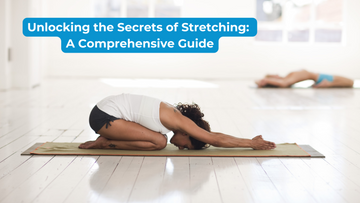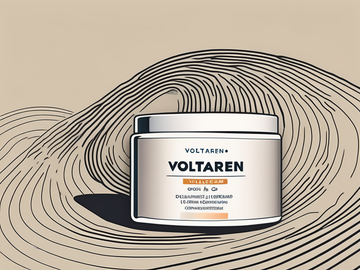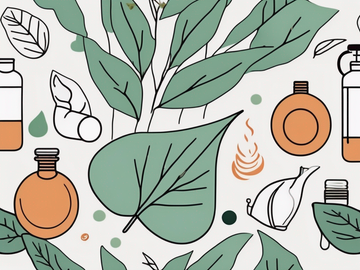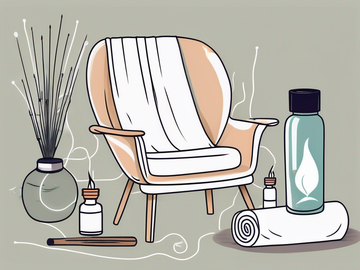Unlocking the Secrets of Stretching: A Comprehensive Guide
by Dr. Chris Oswald on Dec 15, 2023

In today's fast-paced world, our bodies often bear the brunt of our hectic lifestyles. From sitting for prolonged periods at our desks to engaging in intense physical activities, our muscles and joints are constantly under stress. But what if there was a simple solution to alleviate this tension and improve our overall well-being? Enter the world of stretching—a practice that, when done correctly, can transform our physical health and enhance our daily lives.
When and What Should You Stretch?
Stretching is not just about reaching down to touch your toes. It's a targeted approach to enhance flexibility, reduce muscle tension, and prevent injuries. But when is the best time to stretch, and which muscles should you focus on?
Ideally, stretching should be done when the body is warm, ensuring there's sufficient blood flow carrying essential minerals like calcium and magnesium throughout the tissues. Mid-morning, post-lunch, and early evening are prime times since the body has been active and is well-nourished. However, given our busy schedules, it's not always feasible to set aside dedicated stretching time during the day. This is where the magic of the Daily Stretch Routine comes into play, which can be seamlessly incorporated into your morning shower routine. Just 5-10 minutes of targeted stretching can yield significant results.
Understanding Your Body & Its Limits: Finding Your Inherent Blueprint
Before diving deep into the stretches, it's crucial to understand our bodies. Each one of us is unique, and recognizing our individual physical limitations is the first step towards effective stretching.
A visit to a chiropractor can provide insights into potential issues that might lead to injuries. They can assess your spine, joints, and muscles to determine your inherent blueprint—essentially, understanding your body's structural composition. This knowledge allows you to work in harmony with your body, using stretches to maintain optimal functionality and health.
For instance, if a muscle is short, adjacent muscles or muscle groups will make compensatory changes. This can lead to tissue changes throughout the body, resulting in bone or joint misalignment and nerve irritation. By understanding your inherent blueprint, you can address these issues and ensure your stretches are both safe and effective.
The Intricacies of Flexibility, Stretching, and Exercise
In the realm of physical fitness and well-being, terms like flexibility, stretching, and exercise are frequently mentioned. However, while they might seem synonymous at first glance, each has its distinct definition and significance. Let's delve deeper into these concepts and understand their unique roles in our journey towards optimal health.
Flexibility: The Foundation of Movement
Flexibility is the cornerstone of our body's ability to move freely and efficiently. It refers to the range of motion available at our joints, determined by the length of our muscles and the mobility of our joints. A person with good flexibility can perform activities with a greater ease, has a reduced risk of injuries, and often experiences less muscle stiffness and pain.
Factors affecting flexibility include age, gender, genetics, and daily activities. For instance, a ballet dancer might have greater flexibility in their legs and hips compared to a long-distance runner due to the nature of their training and the demands of their respective sports.
Stretching: The Pathway to Enhanced Flexibility
While flexibility is a natural attribute, stretching is an intentional act designed to improve it. Stretching involves elongating muscles to their full length and can be categorized into two main types:
- Static Stretching: This involves holding a stretch for a set period, usually between 15 to 60 seconds. It's beneficial for increasing muscle length and is often performed post-exercise to aid in recovery.
- Dynamic Stretching: This form of stretching involves moving parts of your body and gradually increasing reach, speed of movement, or both. It's beneficial during warm-ups as it prepares the body for physical exertion.
- Regular stretching: This form of routine can lead to improved posture, reduced muscle tension, and enhanced athletic performance. Moreover, it can be a therapeutic activity, offering moments of relaxation and mindfulness in our often hectic lives.
Exercise: Beyond Flexibility
Exercise, on the other hand, encompasses a broader spectrum of physical activities aimed at improving overall health. While stretching focuses on muscle length, exercise targets muscle strength, endurance, and cardiovascular health. Types of exercise include aerobic (like running or swimming), anaerobic (like weight lifting), and balance or stability exercises (like yoga or pilates).
The benefits of regular exercise are manifold. It boosts cardiovascular health, strengthens muscles, improves bone density, and promotes mental well-being. Moreover, it plays a pivotal role in weight management and can reduce the risk of chronic diseases like diabetes, heart disease, and certain types of cancer.
The Symbiotic Relationship
While exercise and stretching serve different purposes, they are deeply interconnected. Before any strenuous physical activity, dynamic stretching prepares the body, reducing the risk of injuries. Post-exercise, static stretching aids in muscle recovery, ensuring that waste products are efficiently removed, and reducing muscle soreness.
In essence, think of flexibility as the inherent potential, stretching as the method to realize that potential, and exercise as the comprehensive approach to holistic health. For anyone aiming for a balanced fitness regimen, understanding and incorporating all three elements—flexibility, stretching, and exercise—is paramount.
In Conclusion
Stretching is more than just a physical activity—it's a journey of self-discovery. By understanding our bodies, recognizing our limitations, and incorporating targeted stretches into our daily routines, we can unlock a world of benefits. From reduced pain to enhanced mobility, the power of stretching is waiting to be explored.
So, the next time you feel that familiar muscle twinge or joint ache, remember: your body is trying to communicate with you. Listen to it, understand its needs, and embrace the transformative power of stretching.




